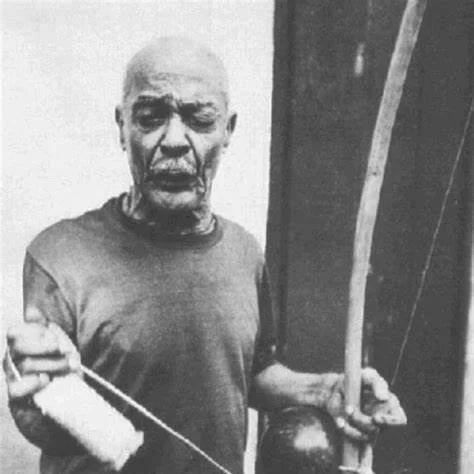Mestre Pastinha
Mestre Pastinha is one of two capoeiristas responsible for the modernization of capoeira, the other being Mestre Bimba. Pastinha is considered the father of the Angola form. Like Bimba, he hailed from Bahia in Brazil.
EARLY LIFE
Born Vicente Ferreira Pastinha in April 1889, he began studying capoeira in 1897 with a man named Benedito. He was taken on as a student after Benedito noticed young Pastinha being beaten up by a neighborhood bully. Benedito taught him a few moves initially to help him deal with the bully and Pastinha was victorious. He would study under Benedito until 1900 while also pursuing a number of jobs. Young Pastinha would continue doing these jobs in old age as a means to support himself while practicing Angola.
AS ANGOLA’S MESTRE
In the decades that followed Pastinha continued practicing capoeira and had since trained several students. He was a fixture at rodas in the area so it wasn’t unusual for him to receive an invite to one of the games.
Ladeira do Gengibirra was where a number of mestres and capoeiristas met to talk and participate in rodas. This was a life changing experience for Pastinha. At the end of the roda, Mestre Amorzinho came up to Pastinha and asked him if he’d be interested in taking over control of his academy of Capoeira Angola.
Later that year in 1941, Pastinha opened the first Capoeria Angola school: the Centro Esportivo de Capoeira Angola. In contrast to Capoeira Regional’s all white uniforms, Angola’s were black pants with yellow t-shirts in honour of Mestre Pastinha’s favourite football team Ypiranga.
Angola would have several decades of good fortune, especially during the 1950s and 1960s. Capoeira Angola seemed to be recognised as a part of Brazilian culture and was given favorable treatment. However, the recession of the 1970s was hard globally and some countries were very slow to recover. As a result, capoeira suffered a number of blows.
DEMISE AND DEATH
In later years the Angola academy and Pastinha were plagued with misfortune. By the late 1960s, Mestre Pastinha was in poor health. In 1971, the local government requests that he leave the academy’s building for renovations. Instead, it became a part of the commercial district. Not only did he lose this space but also most of his equipment and musical instruments which had been left inside. At 84 years old with no source of livelihood, he went to live with his second wife Maria Romélia in a tiny flat in Pelourinho where they lived off the meagre earnings she made from selling acarajé. Poverty took its toll on the Mestre’s health, and after two bad falls he ended up blind and practically immobile. Following his final roda in April 1981, he passed several months later on November 13, 1981 in a Salvador homeless shelter. He was 92 years old.
STAR PUPILS
In his years of teaching Angola, he trained seven future mestres. Three of them are significant for different reasons. While Aberee was responsible for bringing Mestre Pastinha to the very roda where he became Angola’s patron. The other two are his most important students as Pastinha invested a significant amount of time into training them.
João Oliveira dos Santos, also known as Mestre João Grande, is the one who continues to teach Capoeira Angola today. He retired after things went downhill for the style prior to Pastinha’s death. He would return during the 1980s and has been active since with a school in New York. João Pereira dos Santos, known as Mestre João Pequeno, continued practicing and teaching Angola after the demise of Pastinha. He was responsible for continuing the form and goal of Angola in the same vein through economic woes.


